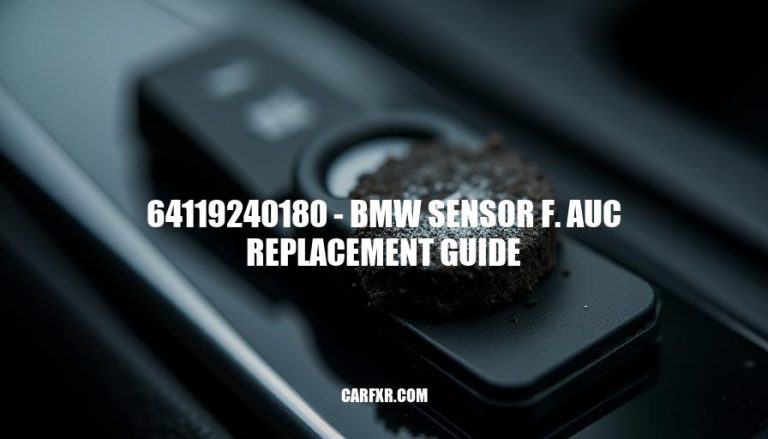
The BMW Part Sensor F. AUC 64119240180 is a key part in BMW cars. It helps control the air conditioning and heating.
This sensor makes sure the cabin temperature is just right, so you’re comfortable while driving. It also helps the car use less fuel by controlling how much air flows through the system.
The BMW Part Sensor F. AUC 64119240180, also known as the Automatic Recirculation Control (AUC) sensor, is an electronic component designed to monitor and control the recirculation of air within the vehicle’s HVAC (Heating, Ventilation, and Air Conditioning) system. This sensor ensures that the air inside the cabin is continuously refreshed, maintaining a comfortable and healthy environment for passengers.
Automatic Recirculation Control: The sensor detects the air quality inside the cabin and automatically activates the recirculation mode when necessary.
This helps to filter out pollutants, odors, and contaminants from the outside air.
Integration with HVAC System: The sensor is integrated into the HVAC system and communicates with the vehicle’s control unit to regulate the air flow. It ensures that the air conditioning and heating systems operate efficiently by adjusting the recirculation based on the detected air quality.
Optimal Performance: By continuously monitoring the air quality, the sensor helps to maintain optimal performance of the HVAC system, ensuring that the cabin air remains fresh and comfortable.
Compatibility: This sensor is compatible with various BMW models, including 1 Series, 2 Series, 3 Series, and more. It is designed to fit seamlessly into the existing HVAC system of these vehicles.
Part Number: 64119240180
Manufacturer: BMW
Weight: Approximately 0.50 pounds (0.23 kg)
Fitment: Direct replacement for part numbers 64-11-6-926-460, 64-11-6-988-303, and 64-11-9-136-607
Application: Suitable for vehicles with automatic A/C systems
The AUC sensor is connected to the HVAC control unit via wiring harnesses and communicates through electrical signals.
When the sensor detects poor air quality, it sends a signal to the control unit, which then activates the recirculation mode. This integration ensures that the HVAC system responds promptly to changes in air quality, providing a consistent and comfortable cabin environment.
By maintaining the air quality and optimizing the HVAC system’s performance, the AUC sensor plays a crucial role in enhancing the overall driving experience for BMW vehicle owners.
The BMW Part Sensor F. AUC 64119240180 is a critical component that plays a vital role in maintaining optimal vehicle performance, particularly in controlling the air conditioning and heating systems.


